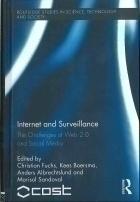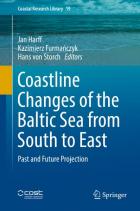
Wood Mechanics - Activity Report 1992

Chemisrty Related to Tropospheric Ozone

Molecular Mechanisms in the Etiology of Non-Insulin Dependent Diabetes Mellitus (NIDDM) - Final Report

TBC for Diesel and Other Internal Combustion Engines - Work Package 6

Quality Assurance of Nuclear Medicine Software

Power Metallurgy - Powder-based Materials Vol V - Ceramics for High-tech Applications

European Sea-level Observing Systems (EOSS) - Status and Future Developments

Internet and Surveillance. The Challenges of Web 2.0 and Social Media
- Author(s): C. Fuchs, K. Boersma, A. Albrechtslund and M. Sandoval (Eds)
- Publisher(s): Routledge
- http://www.routledge.com/books/details/9780415891608/
- ISBN/ISSN: 978-0-415-89160-8
The Internet has been transformed in the past years from a system primarily oriented on information provision into a medium for communication and community-building. The notion of “Web 2.0”, social software, and social networking sites such as Facebook, Twitter and MySpace have emerged in this context. With such platforms comes the massive provision and storage of personal data that are systematically evaluated, marketed, and used for targeting users with advertising. In a world of global economic competition, economic crisis, and fear of terrorism after 9/11, both corporations and state institutions have a growing interest in accessing this personal data. Here, contributors explore this changing landscape by addressing topics such as commercial data collection by advertising, consumer sites and interactive media; self-disclosure in the social web; surveillance of file-sharers; privacy in the age of the internet; civil watch-surveillance on social networking sites; and networked interactive surveillance in transnational space. This book is a result of a research action launched by the COST Action IS0807- Living in Surveillance Society.

Coastline Changes of the Baltic Sea from South to East
- Pages: 388
- Author(s): Harff, Jan, Furmanczyk, Kazimierz, Von Storch, Hans (Eds.)
- Publisher(s): Springer
- http://www.springer.com/gp/book/9783319498928
- ISBN/ISSN: 978-3-319-49894-2 |
This book discusses sea-level and coastline changes. These topics are becoming increasingly important for populations living along the edge of the world’s oceans and seas, especially in areas where eustatic sea-level rise is superimposed on isostatic subsidence and storm-induced coastal erosion. This is the case at the southern and eastern Baltic Sea coast: in the south, glacio-isostatic subsidence enhances the effect of climate-induced sea-level rise and strong storm effects are causing a continuous retreat of the coast.
